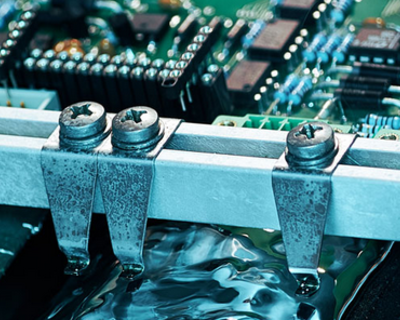How does conventional THT assembly work?
01.09.2014
In conventional THT assembly, wired or through-hole components (also called THT components) are placed into holes drilled into the PCBs, which are then affixed to contact pads using various soldering techniques.
In conventional THT assembly, wired or through-hole components (also called THT components) are placed into holes drilled into the PCBs, which are then affixed to contact pads using various soldering techniques. These components differ from surface-mounted (SMT) components because they have wire leads (pins) to connect them "through" the holes in the boards, rather than placing them directly on soldering paste spread on the surface of a PCB.
Even though SMT assembly methods have largely replaced the more expensive, labor-intensive conventional assembly process, there are still many uses for THT in today's electronics manufacturing market. There are many cases and types of components for which THT assembly is used, including high-performance electronics (such as high-voltage resistors or relays), components with high mechanical stress (connectors, switches), and large components (e.g. capacitors, inductors).
After the THT components are manually placed on the boards, there are three different soldering techniques that are used:
Wave Soldering
With wave soldering, components are soldered to boards in three steps. First, foam flux is evenly applied to the bottom side of the PCB, so that it is entirely coated. Next, the flux material is activated with a preheated unit and heated up to the soldering temperature. In the conventional soldering process, boards are then moved through a turbulent soldering wave. The solder attaches to the component pins in the contact holes. After a cool-down period, the solder hardens and permanently affixes the component to the board. During the final stage, the boards are cooled and moved into a washing bay, where the remaining flux material is cleaned off.
Hand Soldering
Whenever wave soldering is not possible (for example, if SMT components also have to be assembled on the same side of the board), hand assembly is used. Hand assembly is performed by our highly experienced technicians, who are trained using MIL standards.
Selective Soldering
For series production orders, selective soldering enables THT components to be placed on boards that would otherwise not be eligible for wave soldering because SMT components also need to be assembled. In such cases, we resort to partially or fully automated selective soldering processes when a pre-defined amount of tin solder must be applied or if a specific area of the board must be kept free of flux material. These types of production requirements are common for customers in the automotive branch.





